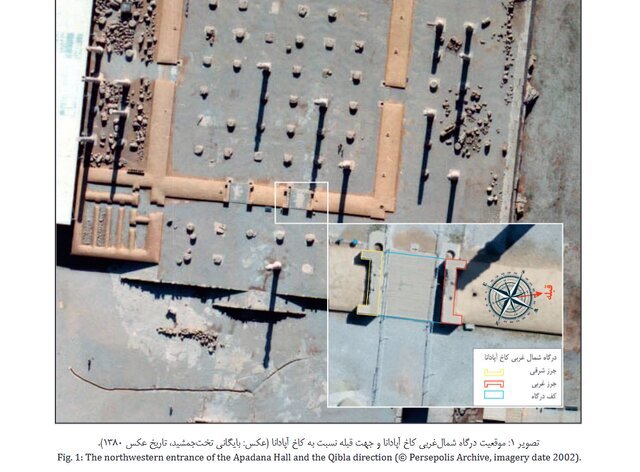Unearthing history: archaeologists discover remnants of ‘mosque’ at Persepolis

TEHRAN - In the latest archaeological endeavors at the historic site of the UNESCO-designated Persepolis, remnants of a “mosque” dating back to the early Islamic era have been unearthed on the western side of the Apadana palace.
Archaeologists and researchers Hamed Moulai and Younes Zare, detailed their findings in the Journal of the Society for Iranian archaeology (JOSIA), revealing the discovery of mosque-related elements adjacent to the northwestern side of the Apadana palace, ISNA reported on Sunday.
The team, while conducting meticulous research on the stone platforms at the northwestern gate of the palace, observed inscriptions and motifs that strongly suggested the existence of a religious site within this grand structure, a relic from the Achaemenid period, the report said.
They found inscriptions, bearing Arabic script and Kufic calligraphy, that address prayers and pleas for divine forgiveness for certain individuals. Additionally, blessed names and what appears to be a mihrab (a niche indicating the direction of Mecca) were identified among the discovered artifacts.
These discoveries, combined with accounts from Islamic-era historians, travelers, and Western archaeologists’ reports, solidify the premise that a portion of Persepolis adjacent to Apadana palace was converted into a mosque during the early Islamic period, the researchers said.
The archaeologists emphasized that, based on their findings, no additional architectural elements, such as brick or stone walls, were integrated into the remnants of the Apadana palace. This way, the repurposing likely involved excavating parts of the existing structure to create the mosque.
According to the researchers, the historical significance of Persepolis continued over time, referred to as “Hundred Columns” during the Sassanian era, transitioning to “Forty Columns” and later “Forty Minarets,” subsequently named “Masjed-e Soleyman” (Mosque of Solomon), “Malak-e Soleyman” (Solomon’s Palace), and finally, “Emarat-e Jamshidi” (Jamshid’s Palace) or “Takht-e Jamshid” (Throne of Jamshid).
It is speculated that this location served as a mosque for a limited period, and for reasons yet unknown, the mosque’s existence was relatively short-lived. However, the memory of this site as “Masjed-e Soleyman” persists in the collective memory of local communities.
Also known as Takht-e Jamshid, Persepolis ranks among the archaeological sites, that have no equivalent, considering its unique architecture, urban planning, construction technology, and art.
Majestic approaches, monumental stairways, throne and reception rooms, and dependencies have made that 13-ha ensemble one of the world’s greatest archaeological sites.
Construction of its immense terrace was begun about 518 BC by Darius the Great, the Achaemenid Empire’s king. On this terrace, successive kings erected a series of architecturally stunning palatial buildings, among them the massive Apadana palace and the Throne Hall (“Hundred-Column Hall”).
The terrace is a grandiose architectural creation, with its double flight of access stairs, walls covered by sculpted friezes at various levels, monumental gateways, gigantic sculpted winged bulls, and remains of large halls.
By carefully engineering lighter roofs and using wooden lintels, the Achaemenid architects were able to use a minimal number of astonishingly slender columns to support open-area roofs. Columns were topped with elaborate capitals; typical was the double-bull capital where, resting on double volutes, the forequarters of two kneeling bulls, placed back-to-back, extended their coupled necks and their twin heads directly under the intersections of the beams of the ceiling.
Narratives say that Persepolis was burnt by Alexander the Great in 330 BC apparently as revenge against the Persians, because it seems the Persian King Xerxes had burnt the Greek City of Athens around 150 years earlier.
AFM
Leave a Comment